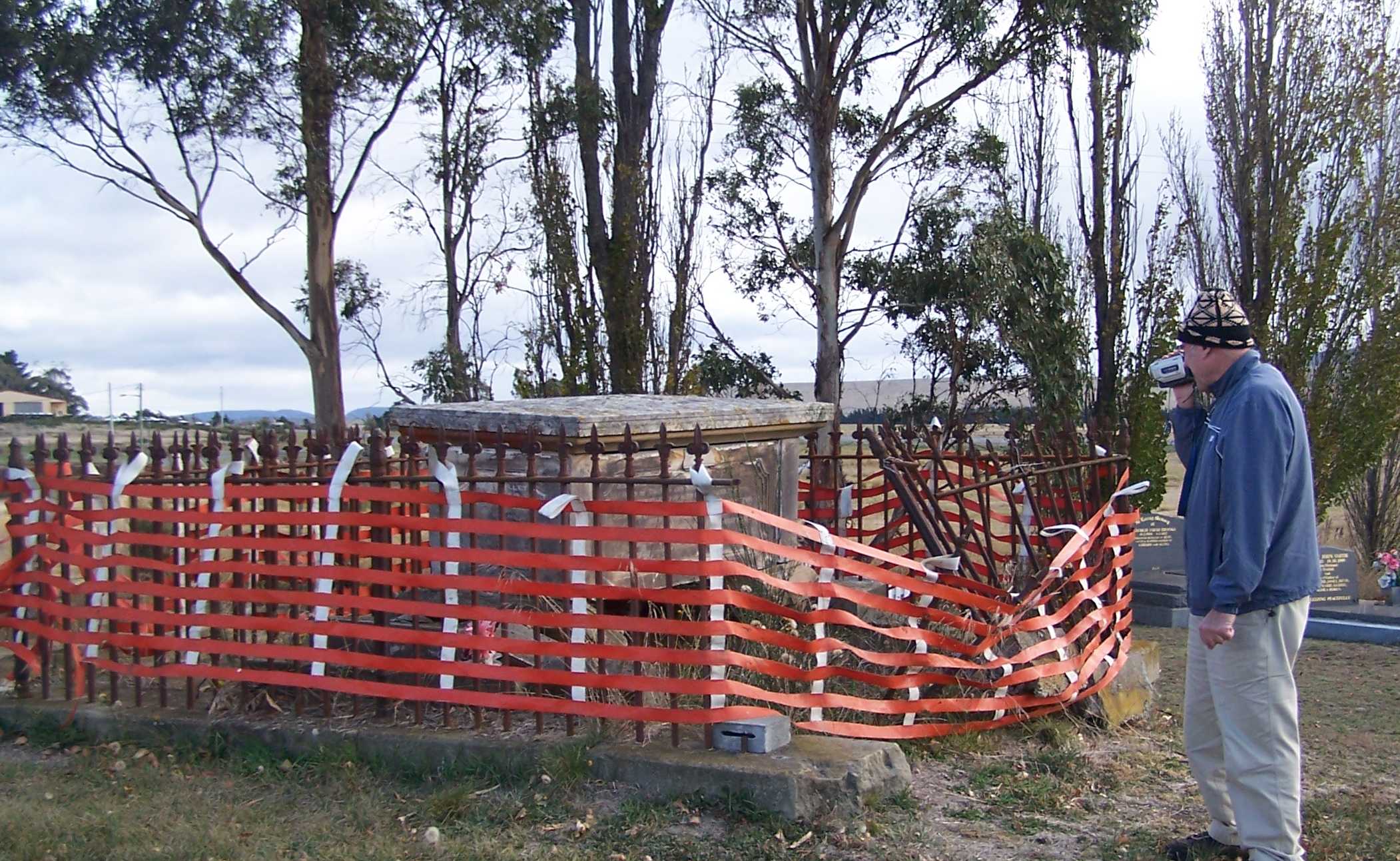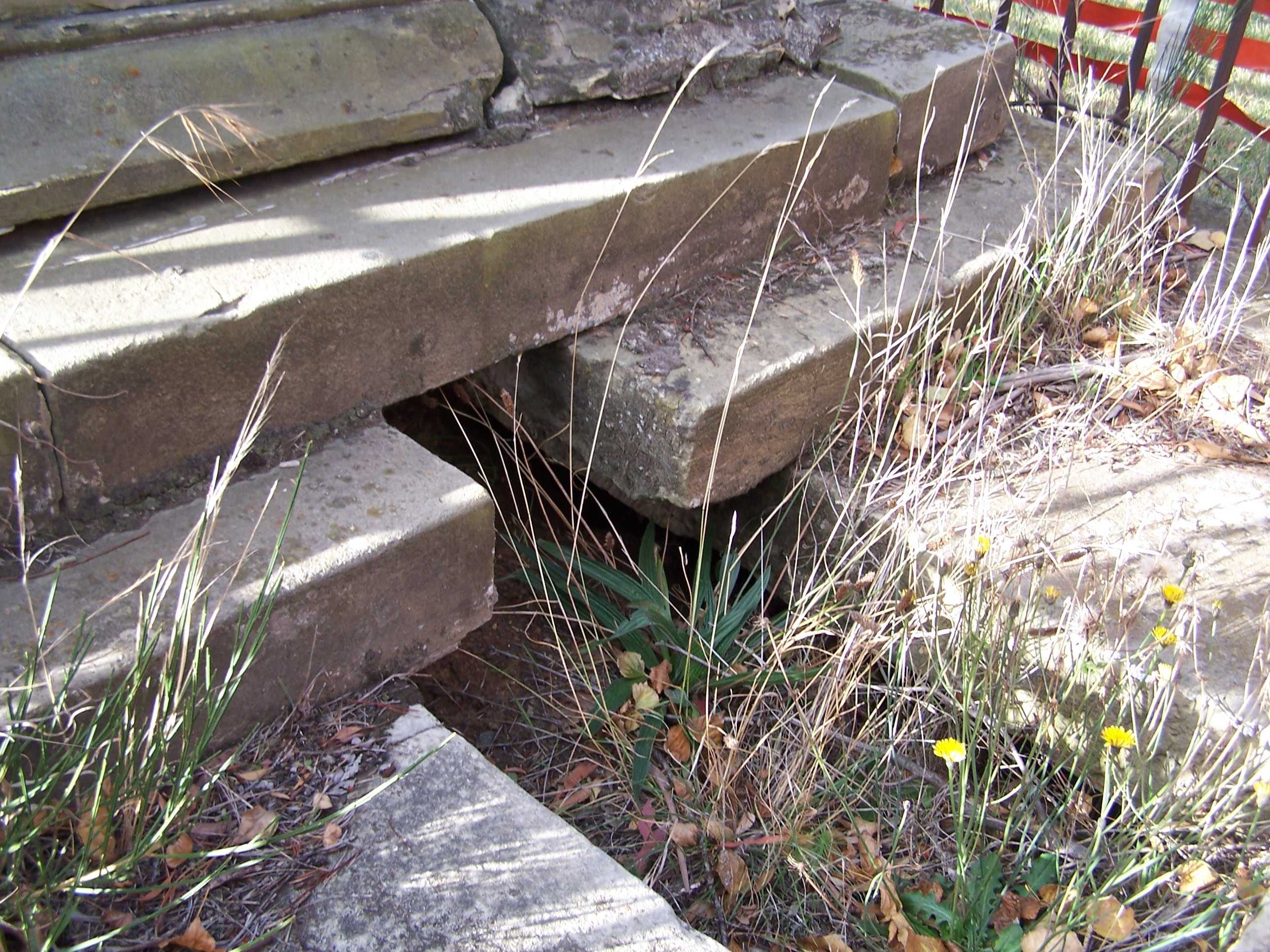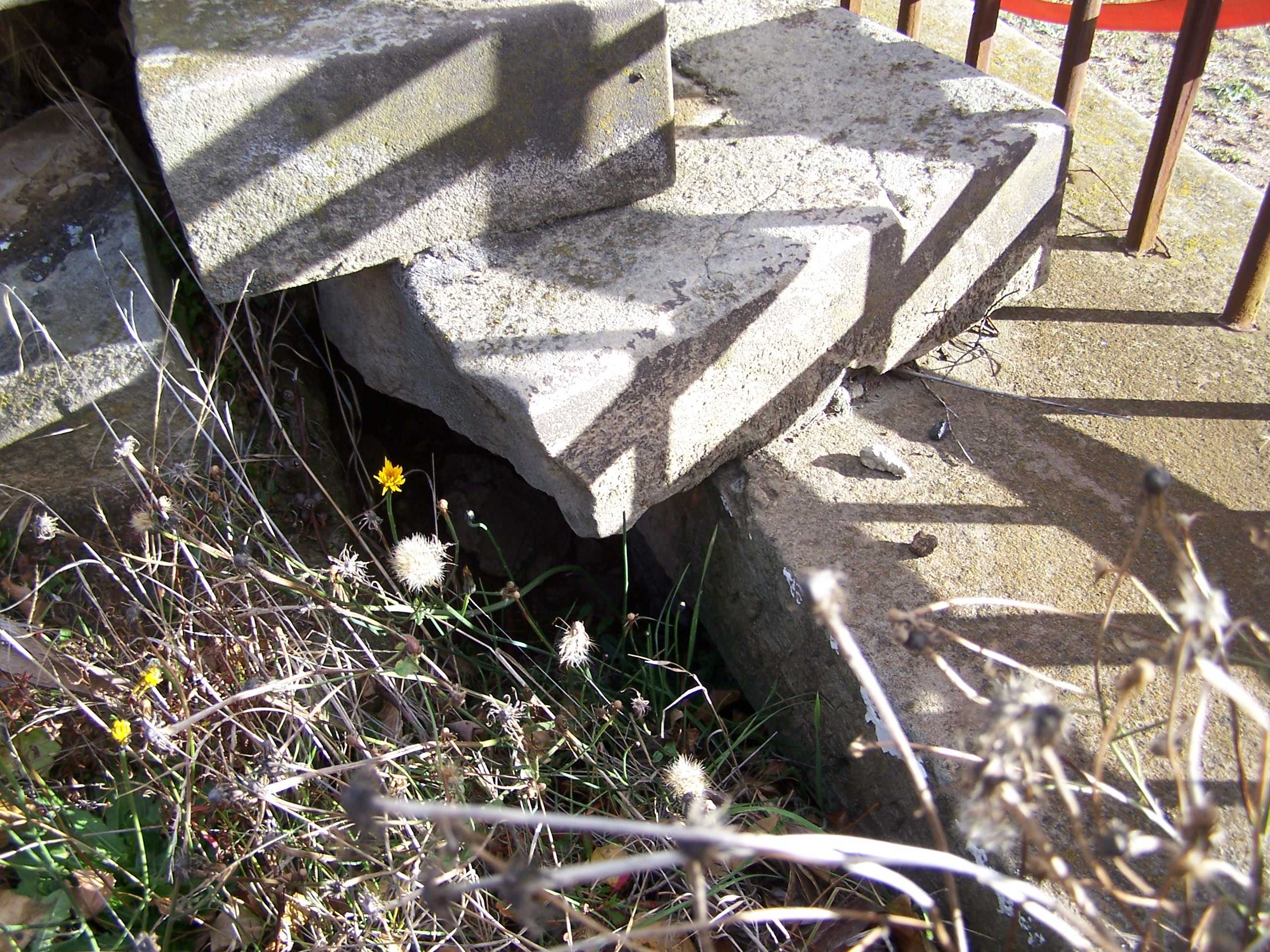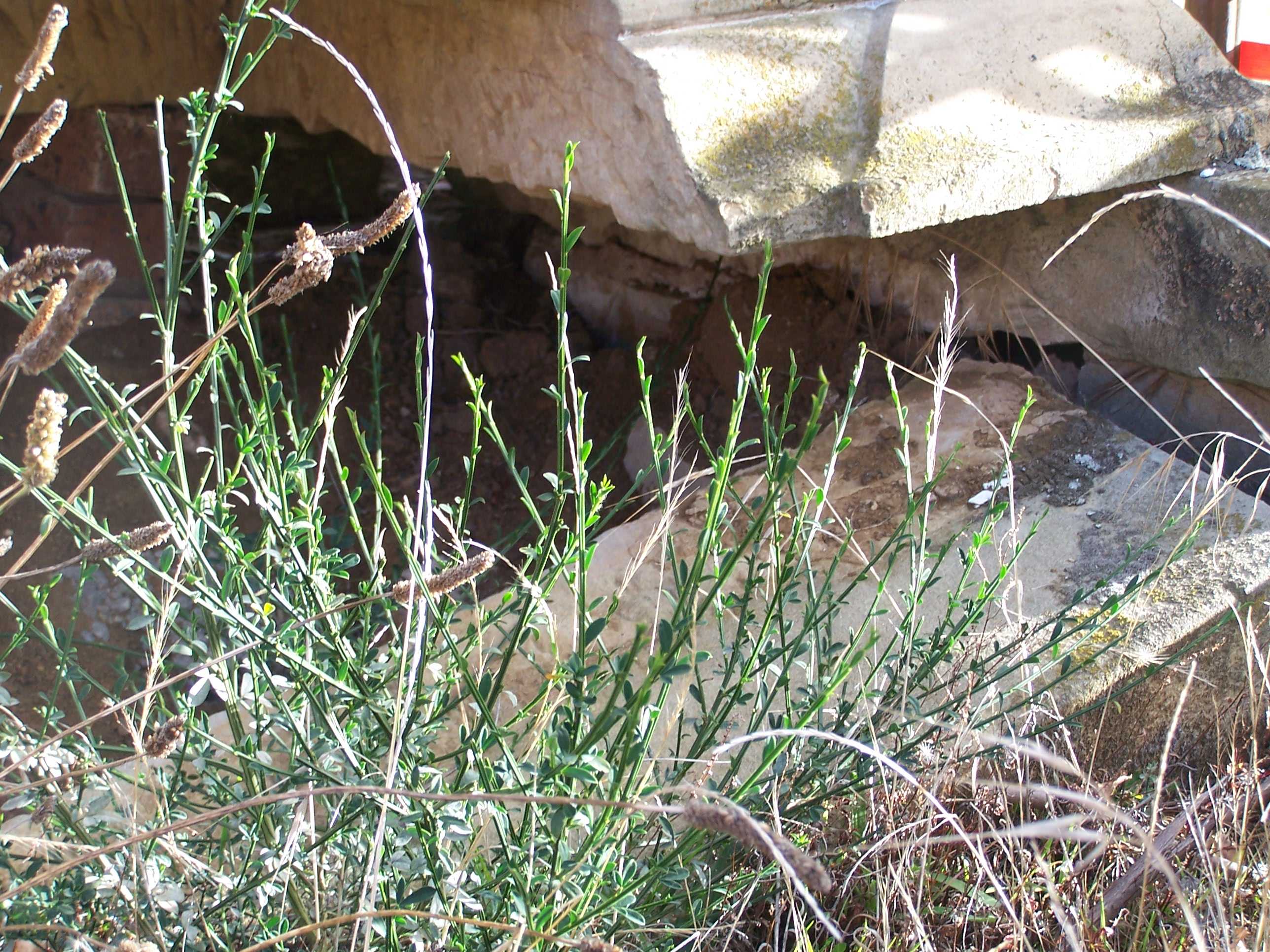
In April 2010, we travelled to Tasmania for a holiday, we decided to spend a couple of days in two towns, New Norfolk, and Oatlands. It was just be a brief visit, as we knew that the Jillett's had lived there, and we were aware that the Callington Mill was getting repaired.
We found New Norfolk, and with the help of modern technology and the google maps, we finally found a little cemetery in an area known as Back River. Here we located numerous grave sites all with familiar names. We stayed at an old Mental Institution.
Next day we travelled onto Oatlands, through some very beautiful country, full of old buildings and houses, and some strange crop growing under cover.
We arrived at Oatlands, and were fascinated by the old buildings and the layout of the town. We visited the Mill, and saw the restoration project. We had visited and had lunch in the stables just down from the mill, and later we decided to search the cemeteries for the graves.
We nearly gave up because we just couldn't find any graves for Thomas and Mary Ann, then we decided to investigate the grave site which had been cordoned off with safety tape, due to its condition. We couldn't believe our eyes when we found that this in fact was the resting place of three Jillett children and their parents.
That discovery opened up a whole new segment of the family history. It was very apparent something had to be done to repair the grave site, fill it in and cement the base! We set about town, trying to organize this repair.
Then we learnt that it was heritage listed with Heritage Tasmania. That created a whole new story!
We found New Norfolk, and with the help of modern technology and the google maps, we finally found a little cemetery in an area known as Back River. Here we located numerous grave sites all with familiar names. We stayed at an old Mental Institution.
Next day we travelled onto Oatlands, through some very beautiful country, full of old buildings and houses, and some strange crop growing under cover.
We arrived at Oatlands, and were fascinated by the old buildings and the layout of the town. We visited the Mill, and saw the restoration project. We had visited and had lunch in the stables just down from the mill, and later we decided to search the cemeteries for the graves.
We nearly gave up because we just couldn't find any graves for Thomas and Mary Ann, then we decided to investigate the grave site which had been cordoned off with safety tape, due to its condition. We couldn't believe our eyes when we found that this in fact was the resting place of three Jillett children and their parents.
That discovery opened up a whole new segment of the family history. It was very apparent something had to be done to repair the grave site, fill it in and cement the base! We set about town, trying to organize this repair.
Then we learnt that it was heritage listed with Heritage Tasmania. That created a whole new story!
Thomas Jillett Grave in Oatlands 2010
Thomas Jillett's Vault in the Oatlands Cemetery. The vault was built as a monument to his 3 young children who all died within 3 weeks of each other in February 1859, of scarlet fever.
The vault is in a very bad condition and near collapse. The vault wass on the Tasmanian Heritage register, and as such approval for restoration or repair lay with that department.
Given that the family descendants own the vault, it was their responsibility to attend to the repairs. As Thomas' descendants' appear to live in the mainland states, there is absolutely no benefit to any of the family for the vault to be restored. However, given that there is a very high interest amongst tourists to learn and discover more of the early days from the convict settlers, visitors will arrive in Oatlands, and be treated to a great experience in the newly restored mill.
Then they will walk down the street to the cemetery to experience first hand how a Colonial family lived and worked, and they will be met with a pile of rubble.
That is not the impression that we would wish to give to any tourist, who took the time and effort to learn about the Jillett family. The sadness of the time is reflected in the Vault, and the reality of all the children who perished. As Thomas's descendants we owe it to them to ensure that the vault is restored so it will be part of the Historical Records of Oatlands, for future generations to share.
We had no idea just how much the restoration was going to cost, but knew that our outside estimate would be way off base when we learnt that it was Heritage Listed.
Home we came, and I sat on the computer and searched for hours until I found that the Federal Government might assist with one of their programmes. They sent me a letter, I received it on Friday morning, advising that the Historic Sites Orogramme might suit, but that the submission had to be in their hands in Canberra by 3.pm Monday.
They say you can move mountains, and I did, the last submission was received at 2.00 and I had arranged with Canberra to email the submission on Monday and post it as long as the post was by 3.00pm.
The submission before the Federal Government was for a funding grant of 50% under their Historical Sites Program.
and felt confident that the remainder would be raised somehow.
An application was submitted to the Federal Government for their Historic Sites funding programme, and after 9 months they advised the application was successful.
Thomas Jillett's Vault in the Oatlands Cemetery. The vault was built as a monument to his 3 young children who all died within 3 weeks of each other in February 1859, of scarlet fever.
The vault is in a very bad condition and near collapse. The vault wass on the Tasmanian Heritage register, and as such approval for restoration or repair lay with that department.
Given that the family descendants own the vault, it was their responsibility to attend to the repairs. As Thomas' descendants' appear to live in the mainland states, there is absolutely no benefit to any of the family for the vault to be restored. However, given that there is a very high interest amongst tourists to learn and discover more of the early days from the convict settlers, visitors will arrive in Oatlands, and be treated to a great experience in the newly restored mill.
Then they will walk down the street to the cemetery to experience first hand how a Colonial family lived and worked, and they will be met with a pile of rubble.
That is not the impression that we would wish to give to any tourist, who took the time and effort to learn about the Jillett family. The sadness of the time is reflected in the Vault, and the reality of all the children who perished. As Thomas's descendants we owe it to them to ensure that the vault is restored so it will be part of the Historical Records of Oatlands, for future generations to share.
We had no idea just how much the restoration was going to cost, but knew that our outside estimate would be way off base when we learnt that it was Heritage Listed.
Home we came, and I sat on the computer and searched for hours until I found that the Federal Government might assist with one of their programmes. They sent me a letter, I received it on Friday morning, advising that the Historic Sites Orogramme might suit, but that the submission had to be in their hands in Canberra by 3.pm Monday.
They say you can move mountains, and I did, the last submission was received at 2.00 and I had arranged with Canberra to email the submission on Monday and post it as long as the post was by 3.00pm.
The submission before the Federal Government was for a funding grant of 50% under their Historical Sites Program.
and felt confident that the remainder would be raised somehow.
An application was submitted to the Federal Government for their Historic Sites funding programme, and after 9 months they advised the application was successful.
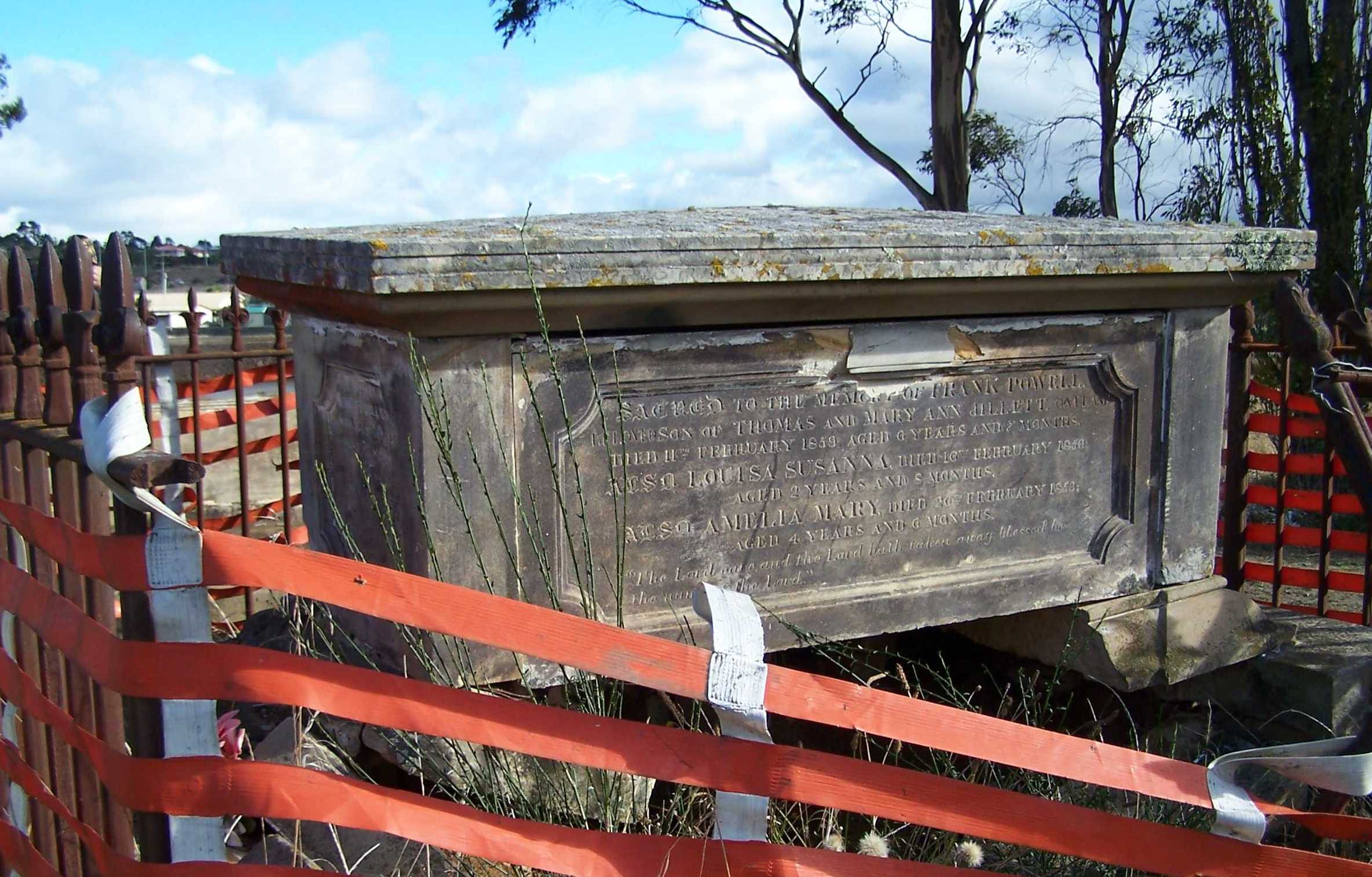
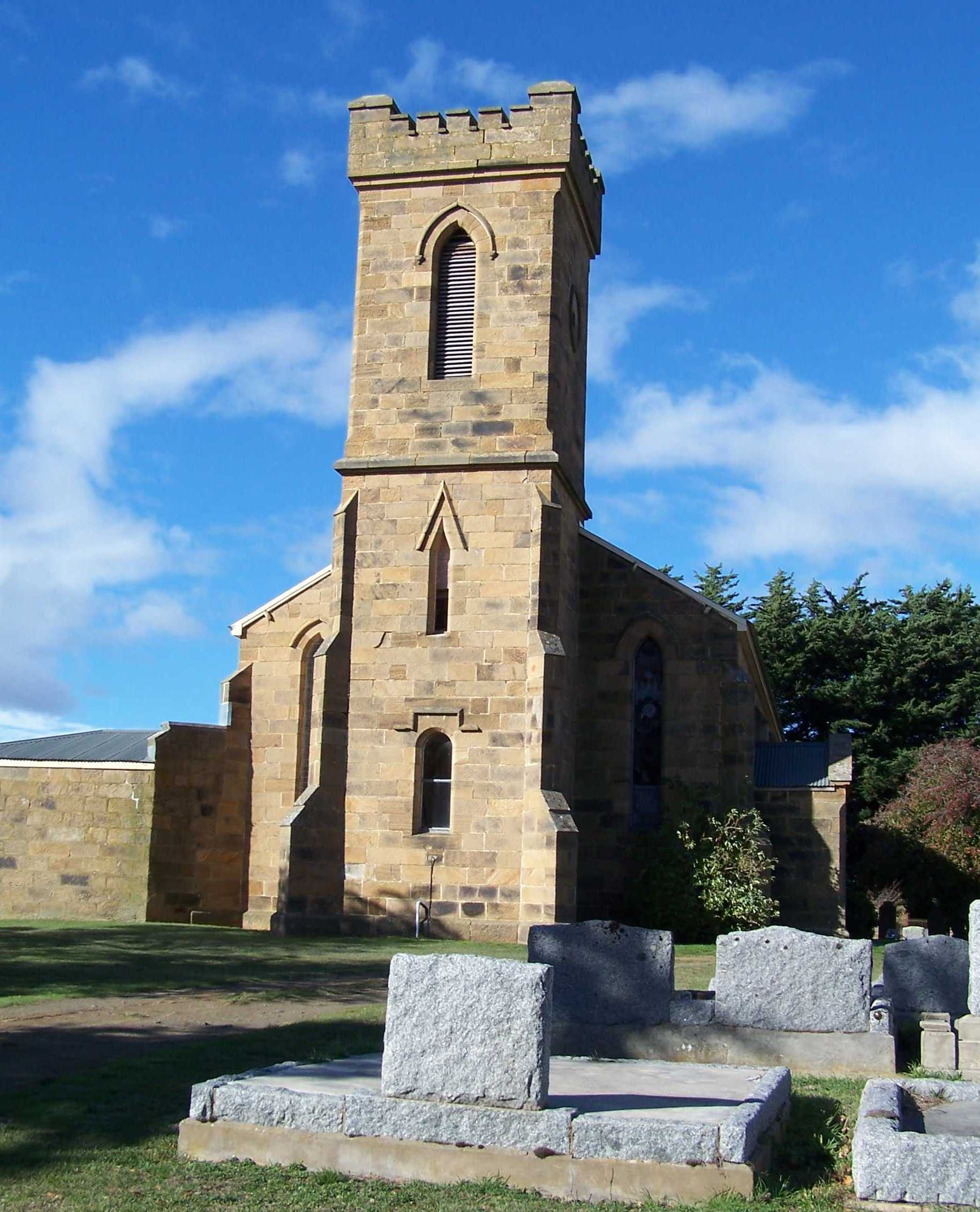
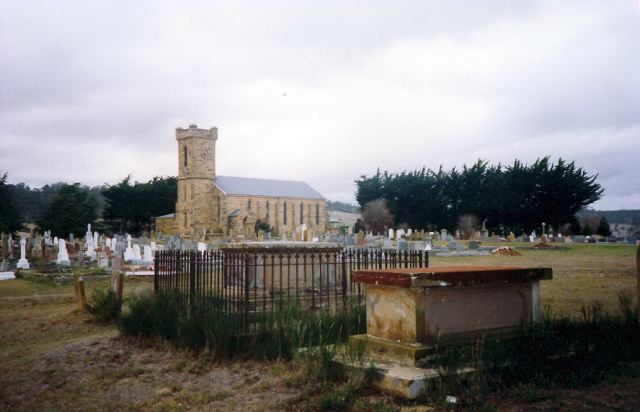
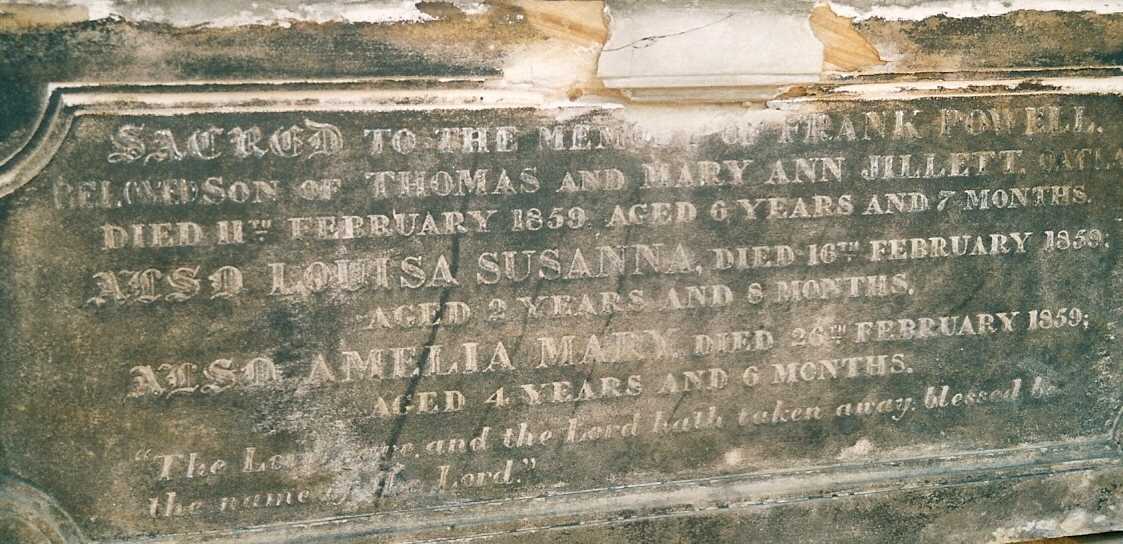
This Family Crypt Restoration was vitally important to preserve the crypt, which stands alongside its brother, as a proud monument not only to the seven young children whose remains lie inside, but as a standing memorial to all the young children who died at an early age, and for their families who suffered accordingly.
The crypt was built in 1859, from local sandstone sourced around the area, and from Lake Dulvarton. The sandstone had crumbled, and the ground beneath Thomas's family crypt has sunk due to the extensive drought in the area, the prevailing weather conditions and the ravishes of time. The lead coffins were visible underneath.
Rather than complete a temporary repair under the Heritage Tasmania guidelines, we could have done of two things. Just sit back and do nothing, and let the crypt crumble into the ground beneath, or we could be pro-active and try for a full restoration which would be beneficial not for the remaining family members of Thomas and Mary Jillett, who nearly all live on Mainland Australia, but for the tourists and visitors to both Oatlands and Tasmania, and the descendents of the young children whose gravesites cannot be traced. We chose to follow the second option.
Hopefully a visit to Oatlands will become a must for tourists, and while they can experience the historical significance of the Mill, it's owners, and their lives, that experience can be completed by viewing the final resting place of one of the town's successful business men, his forefathers and his family.
The completed project now stands as a permanent memorial to the lives of all the young children whose remains are buried in cemeteries throughout Tasmania, and whose headstones and markers, have also decayed over time. 6937 children died in 1850's, an incredible number of deaths. No-where is there a memorial to them. This project changed that.
Completing the Works and a thank you
After receiving notification that the Australian Government had recognised the significant contribution that Thomas Jillett and his family had made to the fabric of early Australian history, I was very fortunate indeed to have the full support from the Mayor Tony Bisdee and the Heritage Officer Soothern Midlands Council, Brad Williams. While not able to contribute in monetary terms the Southern Midlands Council certainly did so in kind.
The help and support from Brad, as the on-site Project Manager was invaluable. He is very dedicated to his role and very keen to ensure that Heritage projects are carefully restored to preserve their life. Along the way, we certainly hit some rough patches. Firstly the project had to be completed within 12 months. However, we had to request an extension of a further 6 months, as the weather had turned rather nasty, and stonemasons were extremely busy on other works including sandstone that had been flooded, at Port Arthur. Even getting a firm quote for the work was rather difficult.
After running around Australia via the internet, looking for suppliers of the fencing, I made a decision not to even attempt the one section of fencing that had been stolen. As usual, to comply with the Heritage Requirements the fencing had to be identical. It appeared that Thomas had the fence pieces brought from England, and the cost to replace the 11 posts would be around $16K.
Then Brad arranged it all. We had a quote, and the works of dismantling the "box" began. After approval from Tasmanian Heritage we were permitted to create a solid base for the return of the "box".
Contrary to belief, the box does not contain anything but was more of the custom of the day.
Subsequent photos of the St David's Cemetery in Hobart, revealed many, many such "boxes", prior to their destruction in 1926.
The works were completed in February 2012. One hundred and fifty years after the deaths of Thomas and Mary Ann's children.
The Dedication was carried out in April, 2012. On rather a cold, damp day but a very rewarding one for all of Thomas and Mary Ann's descendants who braved the conditions to pay their respects to some very brave ancestors.
Many of those family members had never met and it has only been the research for this website that has resulted in cousins meeting others for the very first time.
Family secrets were very guarded in those times.
On the crypt it indicates that Robert and Elizabeth are buried there. That is not so. Robert Jillett was buried at Back River Cemetery in 1832. There is no headstone remaining.
To the family members who gave willingly to help with the costs, to those who came to the dedication, to Dick Adams who opened the restoration, and sponsored the lunch, to the Southern Midlands Council, to those clever stonemasons who completed the work, and to Brad Williams, a huge thank you.
Kris Herron
2013

